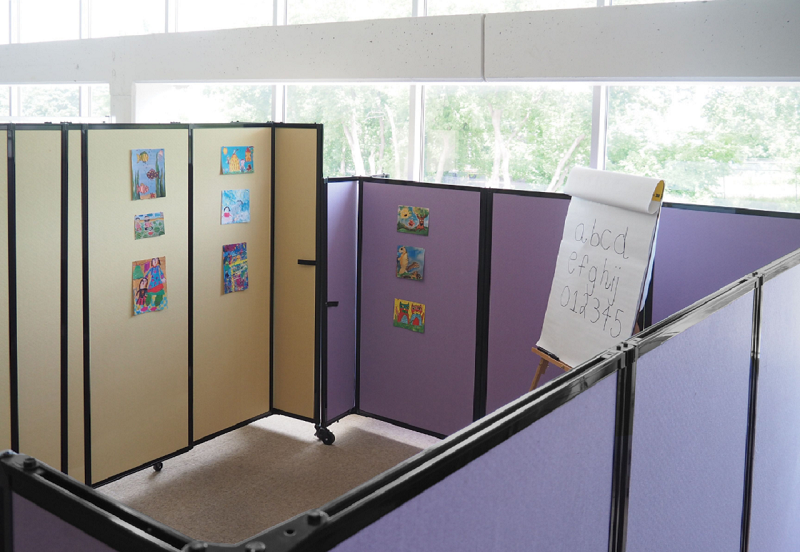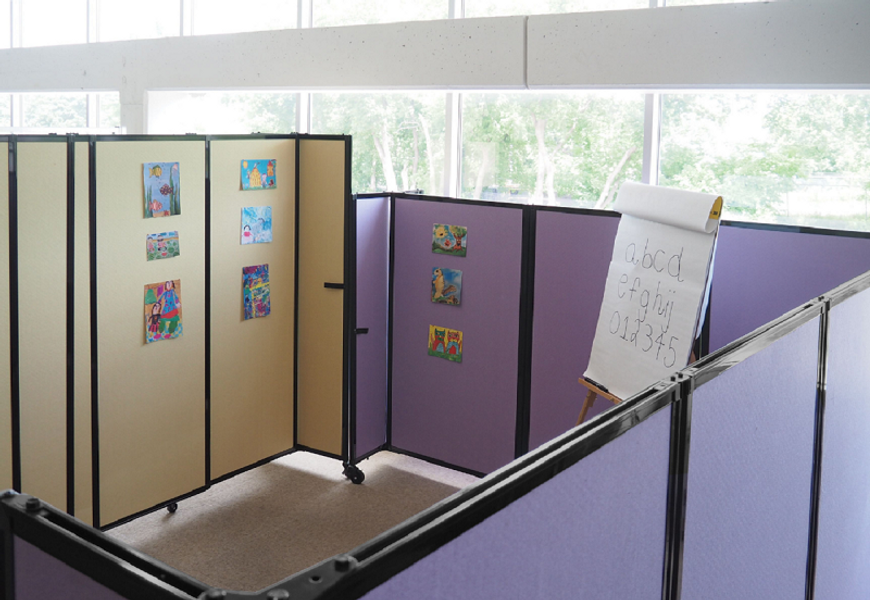
As some students head back to in-person learning again, it’s important to ensure your classroom is set up as safely as possible to help prevent the spread of germs and viruses. Even as the vaccine roll out across the country, it will be awhile before things can go back to normal—social distancing, hand hygiene, and other preventative measures will still be necessary for some time. Here are our top recommendations for setting up your classroom to minimise disruption.
Spaced Seating
Allow for desks and seating to have gaps ideally. When students are working at tables, mark a required distance on the tables to remind students how far apart they should be, colorful tape is a good way to do this. Make sure students understand not to sit in the taped-off areas. Having students use the same assigned seat every day is another way to help prevent the spread of germs.
Face All Seating in the Same Direction
While clusters of desks are often a popular seating arrangement in classrooms, it’s not a good idea to have students seated face-to-face right now. Instead, turn all desks or other seating to face the same direction. When students are seated at tables, have them all sit on the same side of the table, spaced apart. In cases where it’s not possible to avoid having students seated face-to-face, consider using a sneeze guard or a partition between them to reduce the transmission of germ-containing droplets.
Keep Groups Small in Learning Stations
For classrooms that use activity or learning stations, try to limit the number of students at each station so they can ideally maintain an adequate distance between them. When this isn’t possible, encourage the use of face masks and consider implementing physical barriers like sneeze guards.
Set Up Hand Sanitizing Stations
If you don’t have a handwashing sink in your classroom, make sure to have plenty of hand sanitizer available for students and staff. Ideally, set up at least two hand sanitizing stations in the classroom, one by your desk and another by the door, for example. Very young children should be supervised when using hand sanitizer, and all students should be reminded regularly to rub hands together for at least 20 seconds when sanitizing their hands.
Hang Signage for Hand Hygiene & Other Preventive Measures
Use plenty of posters or other signage around the classroom (and the rest of the school) to help remind everyone about precautions they should be taking. Make sure posters include plenty of pictures, as students (and people in general) are more likely to pay attention to pictures than text. You’ll want to have signage for the following:
- Hand Washing. Hang posters near each sink instructing students to wash their hands with soap and water for at least 20 seconds.
- Hand Sanitizing Stations. Use signage to remind students to rub hands together for at least 20 seconds, and to wash hands with soap and water as often as possible in addition to using sanitizer.
- Social Distancing Reminders. Hang posters throughout the classroom reminding students to maintain an ideal distance between each other where practical, ideal for cold and flu season.
- Mask Wearing. Use signs to instruct students on the proper way to wear a mask so it is as effective as possible.
- Other Hygiene Measures to prevent the spread of germs, such as covering coughs and sneezes with a tissue.
Limit the Use of Shared Materials
Use individually-labelled containers, cubbies, or other storage to keep students belongings separate. Ideally, make sure there are enough supplies (writing and art supplies, equipment, paper materials, etc) so that students don’t need to share. If that is not feasible, limit sharing to one group of students at a time, cleaning and disinfecting between use.
Another option is to create “clean” and “dirty” piles for materials. When a student needs a pencil, crayon, or other item, they take one from the clean pile (or, preferably, the teacher hands it to them from the clean pile). Once they’re finished with it, it goes in the dirty pile. Then, the dirty items can be sanitized and moved back to the clean pile.
Keep Cleaning & Disinfecting Products On Hand
More frequent sanitizing of surfaces and educational supplies will be needed, so having the proper cleaning products on hand will be important to maintaining a safe classroom. Set aside some storage space for cleaning products in the classroom so they can be easily accessed by staff when needed. Store these products securely away from children and make sure all staff are trained in the correct way to use them.
Use Sneeze Guards, Partitions or Room Dividers to Aid Social Distancing
While maintaining distance between people is ideal, due to classroom size and the nature of teaching that is not always possible. In these cases, installing physical barriers can help. Sneeze guards or other clear partitions provide a barrier to respiratory droplets while still allowing you and your students to speak face-to-face. Other room dividers and partitions can help create work areas or learning stations to divide students into smaller groups.
Versare’s full line of room dividers and partitions provide a wide range of possibilities for creating separation in the classroom or throughout the school building. A few of our top recommendations for schools are:
- Countertop Sneeze Guards. Perfect for the teacher’s desk, between students working at a table, or in the school office at the registration desk.
- Desktop Privacy Panels. A quick solution to create separation for students working at the same table.
- SoundSorb Room Divider 360. Our most popular partition, perfect for separating larger spaces. Custom printing available as well!
- Economical Room Dividers. Effective space dividing options for tight budgets.
All of our partitions are lightweight, portable, and easy to store and clean (see our cleaning and disinfecting instructions here). Plus they are versatile, even when social distancing is no longer needed, our partitions will come in handy for a variety of other uses.
If you are in need of tools to help set up a safe and healthy classroom, Versare’s room dividers and partitions are a perfect fit. Shop our online store here and give us a call with any questions on 09 570 3647.
 New Zealand Dollar
New Zealand Dollar

